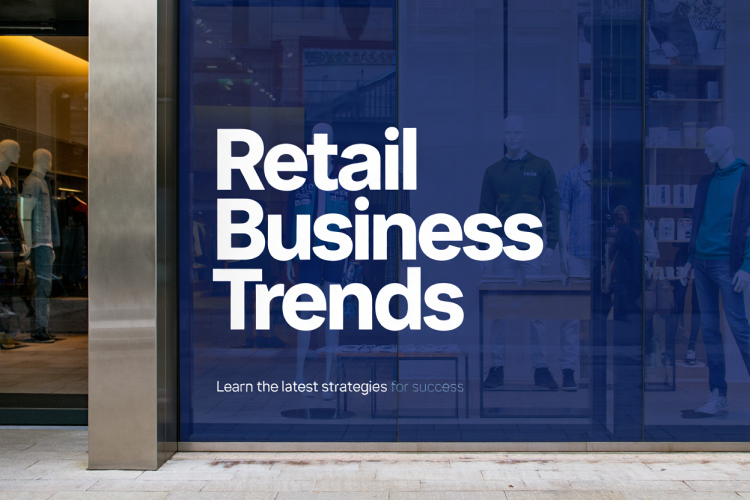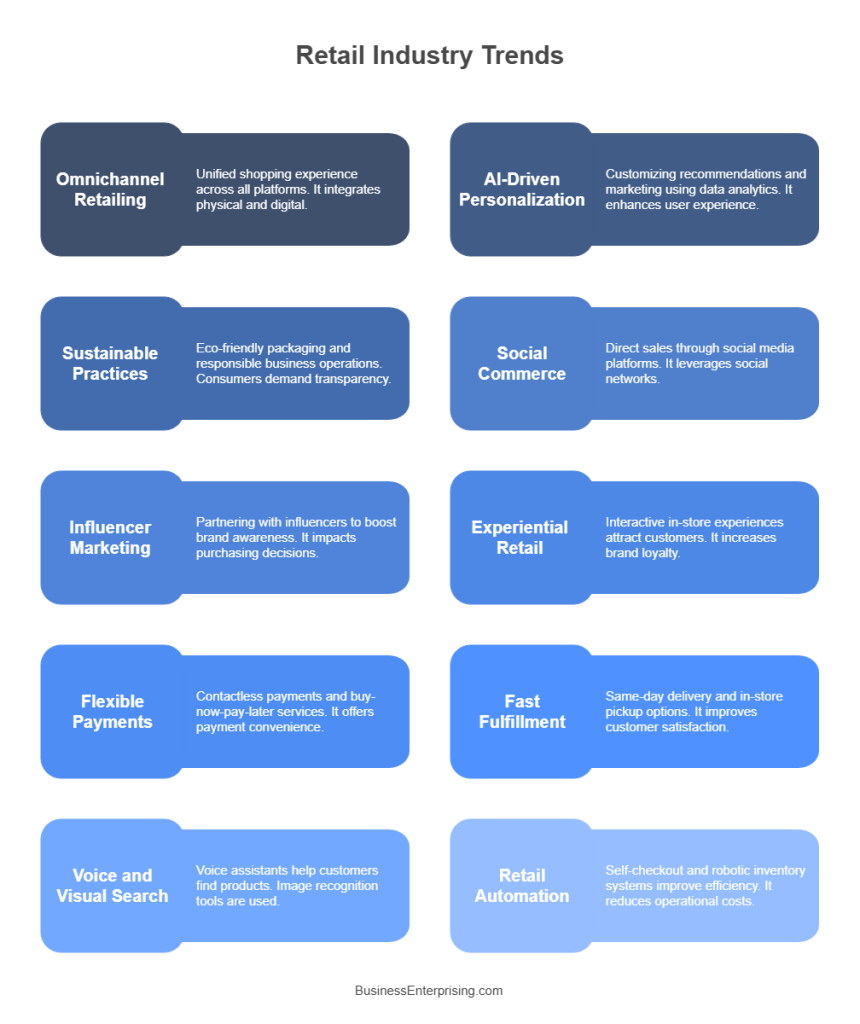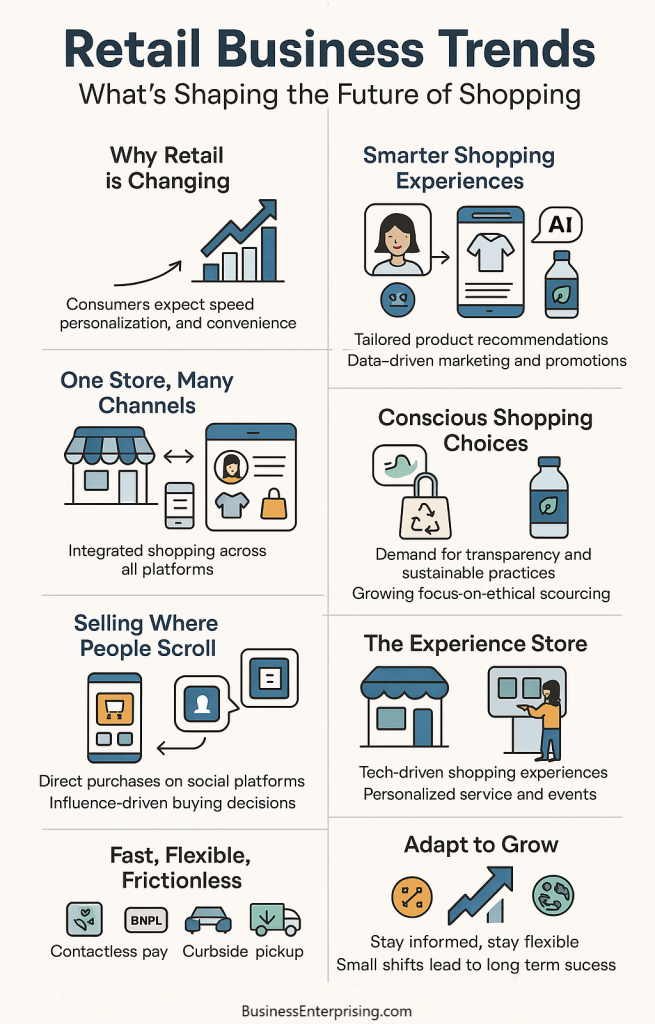
Additionally, shoppers now want more than just products. They look for convenience, speed, and a sense of connection. However, meeting these needs takes more than guesswork. You need to pay attention to what customers actually do, not just what they say. The right tools can help you stay ahead.
Therefore, it’s important to explore new ways of doing business. From mobile checkout to AI-driven suggestions, the options keep expanding. You don’t need to adopt everything at once. But you do need to stay informed and open to change. Small improvements can help you compete and grow.
Furthermore, social values are playing a bigger role in buying decisions. People care about how products are made and where they come from. If your business shows transparency and responsibility, customers are more likely to stick with you. This shift can give you new ways to stand out.
Retail isn’t what it used to be. The pace of change will only continue. By watching key trends and staying flexible, you give your business the best chance at long-term success. You can’t control every shift, but you can control how you respond.
Omnichannel Retailing and the Rise of Unified Commerce
Omnichannel retailing has become one of the most important retail business trends you need to understand. Your customers expect a seamless experience across all platforms. Whether they shop online, through an app, or in your store, they want consistency. Therefore, more retailers are focusing on unified commerce. This approach connects every sales channel into one integrated system.
Additionally, unified commerce gives you better visibility into your inventory and customer behavior. You can track a sale from the website to the store in real time. As a result, your staff stays informed and your customers get faster service. If someone buys online and wants to return in person, your system should already have that data.
However, adopting omnichannel strategies takes planning. Your point-of-sale systems, mobile apps, and website must work together. Without integration, customers will face delays or inconsistent information. That often leads to lost sales or poor reviews.
Therefore, many businesses are upgrading their retail tech. They are also training employees to handle both digital and in-person transactions. Your customer experience must feel smooth, regardless of the shopping method. Even promotions and loyalty programs should carry across platforms.
Furthermore, mobile shopping is pushing retailers to keep refining their approach. Many people now browse on phones, buy later in store, or vice versa. So you need a system that connects every customer touchpoint.
When you invest in unified commerce, you make it easier for customers to shop with you. That means more repeat business and higher satisfaction. As shopping habits change, your ability to meet them across all channels becomes a real competitive advantage.
Personalization Through AI and Data Analytics
Retailers are using artificial intelligence and customer data to personalize nearly every part of the shopping experience. You’ve probably seen it yourself. Product suggestions, targeted emails, and custom discounts all reflect your shopping habits. This level of personalization is no accident. It’s the result of data-driven systems working behind the scenes.
Additionally, AI can process large amounts of customer data quickly. That helps retailers spot trends, buying patterns, and timing. Therefore, they can offer the right product at the right moment. For example, if someone often shops for athletic wear, the system might show new arrivals in that category first. As a result, people are more likely to buy.
However, personalization isn’t just about sales. It also improves customer satisfaction. You feel understood when you receive offers that match your interests. That creates a stronger connection with the brand. Furthermore, AI helps companies test what works best. Promotions, pricing, and layouts can all be adjusted based on real-time feedback.
Retail business trends increasingly rely on data to guide decisions. Retailers who use these tools give themselves a competitive edge. Your ability to serve customers based on actual behavior, not guesswork, matters more than ever. Additionally, personalization works across channels. Online and in-store systems can both contribute to a consistent customer experience.
Therefore, investing in AI and analytics is more than a tech upgrade. It’s a way to improve how you serve your customers. You can recommend better products and time your offers more effectively. Over time, this approach builds loyalty, increases revenue, and keeps your brand relevant.
Sustainability and Ethical Consumerism
Sustainability and ethical consumerism continue to shape how people shop and what they expect from your business. Many customers now ask where products come from, how they’re made, and what impact they have. Therefore, retailers are making changes to meet those expectations. They’re rethinking materials, packaging, and sourcing methods.
Additionally, consumers want more than just low prices. They care about fair labor practices and reducing environmental harm. If your business ignores these concerns, you risk losing trust. However, when you make changes based on values, people notice. You attract shoppers who are loyal for the long term.
Retail business trends show a clear shift toward transparency. Customers now reward companies that show how they operate. Therefore, showing your supply chain practices and offering eco-friendly products can help your brand stand out. You don’t have to overhaul everything at once. Small steps matter and can lead to lasting customer relationships.
Furthermore, retailers are using recycled materials and cutting waste in stores. Some brands offer repair services or recycling programs. These choices speak directly to what your customers value. As demand grows, so does the pressure to be more responsible in every part of your operation.
If you haven’t already started thinking about sustainability, now is the time. It’s no longer optional for many buyers. Your ability to respond can shape how your business grows. Consumers want products that reflect their values. When your brand delivers that, they stay loyal and help spread the word.
The Impact of Social Commerce and Influencer Marketing
Social commerce has quickly become a major force in the retail space. You can now sell directly through platforms like Instagram, TikTok, and Facebook. This shift shortens the buying process and meets your customers where they already spend time. Therefore, it gives you a new way to drive sales and build brand awareness.
Additionally, influencers have taken a lead role in shaping buying decisions. People trust content from those they follow more than traditional ads. As a result, brands partner with influencers to showcase products in a relatable way. This can lead to quick sales and higher engagement. However, not every influencer is a good fit. You need partnerships that match your audience and brand voice.
Retail business trends show strong growth in social selling. Customers are now shopping while scrolling. Therefore, you need to create content that catches attention and builds trust fast. A short video or photo carousel can now do the job of a full website visit. This changes how you present your brand and products.
Furthermore, many platforms now offer built-in tools for checkout, reviews, and promotions. This makes it easier for you to turn interest into action. It also helps you track performance more effectively. You’ll know what content drives sales and where to focus next.
If your business hasn’t explored social commerce, it may be time to start. Selling through social platforms gives you speed and reach. When paired with the right influencers, it can grow your brand faster than traditional methods.
Experiential Retail and In-Store Innovation
Retailers are rethinking their store spaces to offer more than just products. You now need to give people a reason to visit. Therefore, many businesses are using technology and interactive experiences to attract foot traffic. This shift is part of larger retail business trends focused on customer engagement.
Additionally, in-store tech is becoming more common. From digital mirrors to mobile checkout, these tools improve the shopping experience. Customers appreciate speed and convenience. However, technology alone won’t keep people coming back. Your store also needs to feel personalized and engaging.
Therefore, some retailers are adding events, workshops, and one-on-one services. These efforts help create stronger connections with your customers. People remember experiences more than transactions. You give them something they can’t get online. Furthermore, staff training plays a big role in these setups. Well-informed employees can offer tailored suggestions that feel genuine.
Interactive displays and try-before-you-buy features are also helping to boost engagement. You give customers a chance to explore products on their terms. That increases the chances of a sale and improves satisfaction. Additionally, data from these interactions can help you understand what customers like.
Retailers who invest in in-store innovation tend to see higher loyalty and longer visits. You’re not just selling a product. You’re offering an experience that builds brand value. As expectations shift, your ability to offer something memorable can set your business apart.
The Evolution of Payment and Fulfillment Options
Payment and fulfillment options have changed fast over the past few years. You’ve likely seen it in your own shopping habits. Therefore, retailers are offering more ways to pay and receive products. These choices help meet customer expectations for speed, safety, and flexibility.
Additionally, contactless payments are now a standard option. Many people prefer tapping a phone or card instead of handing over cash. This method is faster and reduces wait times. However, payment is only one piece of the process. How customers receive their purchases also matters.
Buy-now-pay-later services are gaining traction with many shoppers. These plans let people buy without paying the full amount upfront. Therefore, they can increase conversions and average order values. At the same time, you still get paid right away. This creates benefits for both you and your customers.
Furthermore, same-day delivery and curbside pickup have changed how people shop. You no longer need to rely only on in-store visits or standard shipping. These options let you serve customers with different needs and schedules. Additionally, they help you stay competitive with larger retailers offering similar services.
Retail business trends clearly show that convenience drives loyalty. When you make it easier to buy and receive items, people notice. They are more likely to return and recommend your business to others. Therefore, investing in updated payment tools and flexible fulfillment options can help you keep up with shifting demands. You don’t need to offer everything at once, but small improvements go a long way.
Conclusion
Retail continues to change quickly, and so do your customers’ expectations. You can’t afford to rely on old methods alone. Therefore, keeping up with shifts in shopping behavior gives you an edge. Technology, convenience, and values now play a bigger role in buying decisions.
Additionally, people want seamless experiences both online and in store. They also look for brands that reflect their personal beliefs. However, meeting these demands doesn’t always require a full overhaul. Small changes in service, communication, or technology can make a big impact.
Retail business trends point to one clear direction—adapt or fall behind. Your customers move fast, and you need to keep pace. Therefore, testing new tools and learning from your results can help you stay relevant. Personalized service, flexible payments, and eco-conscious practices are no longer extra—they’re expected.
Furthermore, every part of your business should support convenience and trust. This includes how you present products, take payments, and fulfill orders. When those pieces work together, you create an experience worth repeating. You also give people a reason to come back and refer others.
If you want long-term growth, you have to meet your customers where they are now. That often means rethinking old habits and trying new methods. Keep listening to your audience and watching what works. You don’t need to follow every trend, but you do need to stay informed. Consistent progress will put you ahead.



